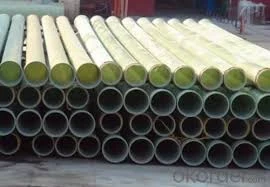
-
 Afrikaans
Afrikaans -
 Albanian
Albanian -
 Amharic
Amharic -
 Arabic
Arabic -
 Armenian
Armenian -
 Azerbaijani
Azerbaijani -
 Basque
Basque -
 Belarusian
Belarusian -
 Bengali
Bengali -
 Bosnian
Bosnian -
 Bulgarian
Bulgarian -
 Catalan
Catalan -
 Cebuano
Cebuano -
 China
China -
 China (Taiwan)
China (Taiwan) -
 Corsican
Corsican -
 Croatian
Croatian -
 Czech
Czech -
 Danish
Danish -
 Dutch
Dutch -
 English
English -
 Esperanto
Esperanto -
 Estonian
Estonian -
 Finnish
Finnish -
 French
French -
 Frisian
Frisian -
 Galician
Galician -
 Georgian
Georgian -
 German
German -
 Greek
Greek -
 Gujarati
Gujarati -
 Haitian Creole
Haitian Creole -
 hausa
hausa -
 hawaiian
hawaiian -
 Hebrew
Hebrew -
 Hindi
Hindi -
 Miao
Miao -
 Hungarian
Hungarian -
 Icelandic
Icelandic -
 igbo
igbo -
 Indonesian
Indonesian -
 irish
irish -
 Italian
Italian -
 Japanese
Japanese -
 Javanese
Javanese -
 Kannada
Kannada -
 kazakh
kazakh -
 Khmer
Khmer -
 Rwandese
Rwandese -
 Korean
Korean -
 Kurdish
Kurdish -
 Kyrgyz
Kyrgyz -
 Lao
Lao -
 Latin
Latin -
 Latvian
Latvian -
 Lithuanian
Lithuanian -
 Luxembourgish
Luxembourgish -
 Macedonian
Macedonian -
 Malgashi
Malgashi -
 Malay
Malay -
 Malayalam
Malayalam -
 Maltese
Maltese -
 Maori
Maori -
 Marathi
Marathi -
 Mongolian
Mongolian -
 Myanmar
Myanmar -
 Nepali
Nepali -
 Norwegian
Norwegian -
 Norwegian
Norwegian -
 Occitan
Occitan -
 Pashto
Pashto -
 Persian
Persian -
 Polish
Polish -
 Portuguese
Portuguese -
 Punjabi
Punjabi -
 Romanian
Romanian -
 Russian
Russian -
 Samoan
Samoan -
 Scottish Gaelic
Scottish Gaelic -
 Serbian
Serbian -
 Sesotho
Sesotho -
 Shona
Shona -
 Sindhi
Sindhi -
 Sinhala
Sinhala -
 Slovak
Slovak -
 Slovenian
Slovenian -
 Somali
Somali -
 Spanish
Spanish -
 Sundanese
Sundanese -
 Swahili
Swahili -
 Swedish
Swedish -
 Tagalog
Tagalog -
 Tajik
Tajik -
 Tamil
Tamil -
 Tatar
Tatar -
 Telugu
Telugu -
 Thai
Thai -
 Turkish
Turkish -
 Turkmen
Turkmen -
 Ukrainian
Ukrainian -
 Urdu
Urdu -
 Uighur
Uighur -
 Uzbek
Uzbek -
 Vietnamese
Vietnamese -
 Welsh
Welsh -
 Bantu
Bantu -
 Yiddish
Yiddish -
 Yoruba
Yoruba -
 Zulu
Zulu
frp damper
Understanding FRP Dampers A Modern Solution for Structural Stability
In recent years, the construction and civil engineering industries have seen significant advancements in materials and technologies designed to enhance structural stability and resilience against various environmental forces. One such innovation is the Fiber Reinforced Polymer (FRP) damper, a device that effectively mitigates vibrations and energy transfer in structures, ultimately improving their performance during seismic events and dynamic loading conditions.
Understanding FRP Dampers A Modern Solution for Structural Stability
The primary function of FRP dampers is to absorb and dissipate energy generated from dynamic loads, such as earthquakes, wind, and traffic-induced vibrations. By employing these dampers in the design of buildings, bridges, and other structures, engineers can significantly enhance their ability to withstand such forces. During seismic activity, for instance, the oscillations caused by ground motion can lead to structural failure if not adequately mitigated. FRP dampers serve as a critical countermeasure, reducing the amplitude of these oscillations and maintaining the integrity of the structure.
frp damper

One of the remarkable advantages of FRP dampers is their corrosion resistance. Unlike traditional damping systems made of metal, FRP materials are impervious to rust and degradation from environmental factors, such as moisture and chemicals. This property extends the lifespan of the dampers and reduces maintenance costs, making them a cost-effective solution in the long run. Additionally, their lightweight nature allows for easier installation and reduced transportation costs, further enhancing their practicality in existing and new structures.
The versatility of FRP dampers is also noteworthy. They can be designed and manufactured to meet specific requirements, adapting to the unique challenges posed by different structural configurations and loading conditions. Whether integrated into a high-rise building, a bridge, or even retrofitted into aging infrastructure, FRP dampers can be customized to suit varying applications, ensuring optimal performance across a range of scenarios.
Research and development into FRP damping technologies continue to evolve, leading to even more innovative applications and designs. Modern computational modeling techniques and experimental testing methods have allowed engineers to better understand how these dampers perform under different conditions, paving the way for groundbreaking designs that leverage the unique properties of FRP materials. As more engineers and designers become aware of the benefits of FRP dampers, it is likely that their adoption will increase, contributing to safer and more resilient infrastructure.
In conclusion, FRP dampers represent a significant advancement in structural engineering and design. By harnessing the strengths of fiber-reinforced polymers, these dampers provide effective solutions for vibration control and energy dissipation. Their corrosion resistance, lightweight nature, and adaptability make them a modern marvel in the construction industry, offering long-term benefits in terms of performance and maintenance. As the challenges posed by natural disasters and dynamic loads continue to grow, embracing innovative technologies like FRP dampers will be crucial in building structures that not only withstand but thrive in the face of adversity.









